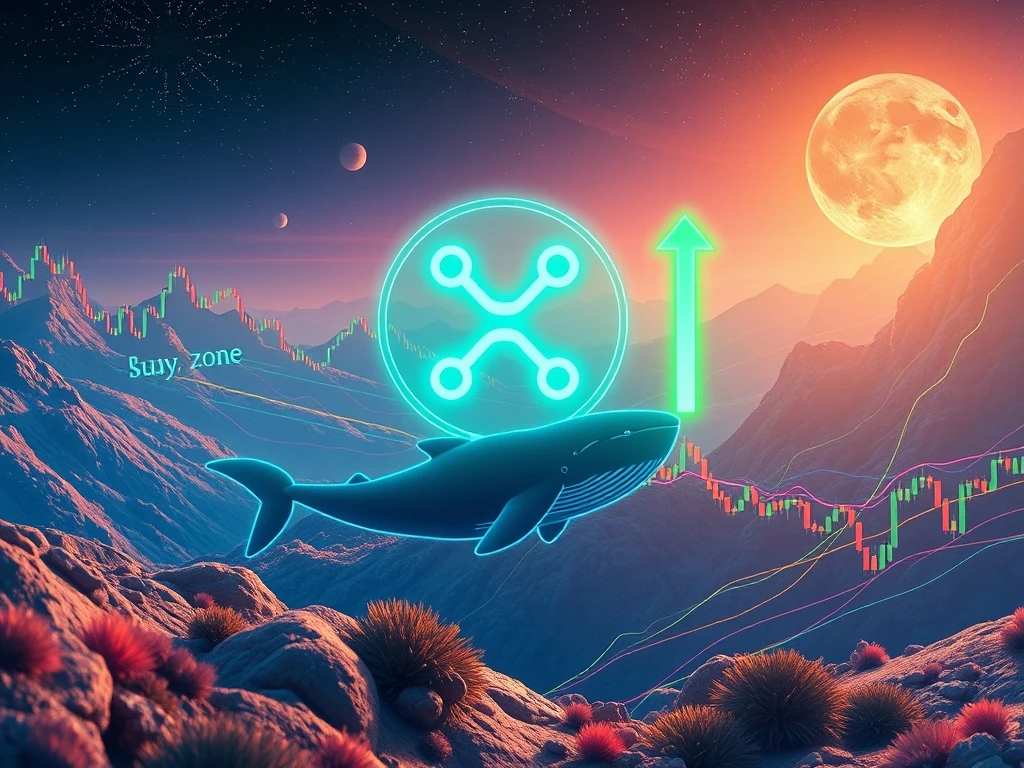XRP Price Unlocks Crucial Buy Zone Below $2.50 After 30% Open Interest Drop

XRP traders are observing significant market shifts. A substantial 30% drop in XRP open interest over the past month has caught attention. This decline signals a potential new buy zone for the popular digital asset. Investors are now closely watching price movements for re-accumulation opportunities. This analysis explores the implications of these shifts for the XRP price and its future trajectory.
XRP Open Interest: A Significant Market Shift
The XRP open interest metric has seen a notable decline. It dropped by 30% over the last month. This figure fell from $11 billion to $7.7 billion. Simultaneously, XRP price retreated from its peak of $3.66. A decrease in open interest often indicates reduced speculative activity. It can signal either profit-taking or waning conviction among leveraged traders. For instance, Q1 saw a similar, yet more severe, outcome. XRP’s open interest then plummeted 65%, from $8.5 billion to $3 billion. Spot prices also fell by over 50% during that period. The current situation echoes this trend, though with less intensity. This suggests traders might begin accumulating once open interest stabilizes. Such a moderation often precedes periods of price stabilization. It can also lead to a fresh accumulation phase. Historically, these phases offer attractive re-entry points before new rallies begin.
Identifying the Crucial Buy Zone for XRP Price
Technically, the XRP price currently shows a daily fair value gap. This gap exists between $2.33 and $2.65. This range represents a probable demand zone. It becomes active if selling pressure continues. Furthermore, a moderation in XRP open interest often precedes price stabilization. It can also signal a new accumulation phase. These periods historically offer attractive re-entry points for investors. They often come before renewed rallies. Importantly, liquidation figures remain relatively subdued. Only $22 million in longs were wiped out on a recent Monday. Additionally, $56 million liquidated during the 6% pullback on August 14. Compared to typical washouts in overheated crypto markets, these figures are low. They highlight a controlled leverage flush. This reduces the risk of cascading sell pressure. Therefore, while the open interest drop warrants caution, it also creates room for a price bottom. If XRP successfully holds the $2.33–$2.65 zone, traders may view this cooling leverage as a springboard. It could propel the next leg higher, avoiding new lows.
Whale Activity and Near-Term Pressures in the Crypto Market
Data from CryptoQuant reveals significant whale activity. XRP’s recent rally to $3.66 saw substantial inflows to exchanges. This activity spanned all value bands. However, the largest came from whale cohorts holding 100,000 to 1 million XRP. Historically, such spikes in exchange inflows often precede major market tops. This pattern was observed in 2018 above $3, in 2021 near $1.90, and around $0.90 in 2023. These events suggest large investors are again positioning to take profits. At present, XRP price consolidates just below $3. Inflows remain elevated during this period. This highlights near-term selling pressure. If whales continue to offload their holdings, downside risk towards the $2.6 support zone could materialize. Conversely, a strong defense of the $3 level would signal resilience. It could then set the stage for another bullish push within the broader crypto market.
The Long-Term Outlook for XRP and Its Potential Buy Zone
Structurally, XRP’s broader uptrend remains firmly intact. Despite short-term volatility, the crypto asset exists in a healthier technical environment. This is especially true when compared with past cycles. Therefore, long-term targets above $5 in 2025 remain well within reach. The current market conditions, including the XRP open interest drop, present a strategic opportunity. This could define a critical buy zone for long-term holders. Investors should conduct their own research. They must understand that every investment and trading move involves risk. This article offers market analysis. It does not provide investment advice or recommendations. Readers should make informed decisions.








